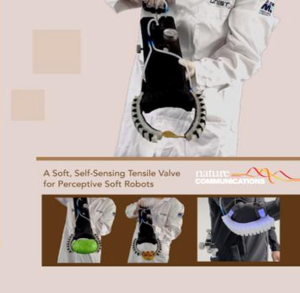Soft inflatable robots are becoming more important for applications requiring safety and adaptability. Yet, integrating sensing and control systems in these robots is challenging without compromising their softness, form factor, or capabilities. A research team jointly led by Professor Jiyun Kim (Department of New Material Engineering, UNIST) and Professor Jonbum Bae (Department of Mechanical Engineering, UNIST) created groundbreaking “soft valve” technology integrating sensors and control valves while maintaining complete softness.
Their research study took a novel approach to overcome existing limitations by creating soft analogs of sensors and control valves that operate without electricity. The tube-shaped part detects external stimuli and precisely controls driving motion using only air pressure. The resulting all-soft valves enable safe operation underwater or in environments where sparks may pose risks, reduce robotic system weight, and are inexpensive. The study focused on making sensors and drive control components from soft materials.
They successfully used all-soft components to develop wearable elbow assist robots to reduce muscle burden caused by repetitive tasks or strenuous activities involving arm movements. The elbow support automatically adjusts according to the angle at which an individual’s arm is bent—a breakthrough contributing to a 63% average decrease in the force exerted on the elbow when wearing the robot.
The soft valve operates using airflow within a tube-shaped structure. When tension is applied to one end of the tube, a helically wound thread inside compresses it, controlling the inflow and outflow of air. This accordion-like motion allows for precise and flexible movements without relying on electrical power. The team states they can accurately control airflow variations, enabling customized adjustments for specific situations and requirements.
These newly developed components can be easily employed using material programming alone, eliminating electronics, ideal for wearable systems. This soft valve technology marks a significant step toward entirely soft, electronics-free robots capable of autonomous operation.


